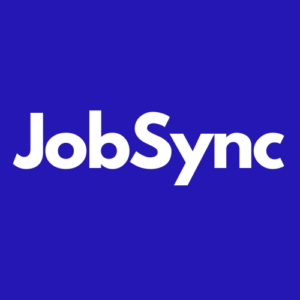
Everyone wants more free candidate traffic—it’s like the holy grail of an inbound recruiting strategy. To help you implement, operationalize and measure your organic success, here are our latest DOs and DON’Ts.
In our last post, we explained how adopting an organic-first strategy can take your easy-to-fill jobs off the table with zero media investment.
That leaves your budget to be tactically deployed, focusing on jobs where there is a high competitive demand for candidates or where your reach has to be extended beyond what the organic sources will natively provide.
While this sounds like a no-brainer, the operational details of how to get organic candidate traffic at scale are considerably more complex. How you go about it means the difference between a slow candidate trickle and a firehose!
It’s worth learning the rules. Executed properly, an organic-first strategy could fill between 50 and 90 percent of your jobs without any media investment. Your organic candidate traffic will increase significantly, the quality of hires will go up, the velocity of hires will increase, and most importantly, you’ll meet your hiring goals
Let’s dive in.
How do job boards think about organic listings?
Job boards use organic listings in three ways:
To fill a gap. These are jobs that serve a group of candidates that come to their site or that they want to come to their site, but there isn’t enough paid job inventory to cover the demand.
To drive a behavior change. Sometimes, job boards will use the “carrot” of organic traffic to make employers change their posting behaviors. For example, by cleaning up titles, adding salary information, formatting shift data, or leveraging the native apply buttons, those employers are rewarded with free candidate traffic.
To enhance their offering. Job boards will also use organic traffic to provide additional value and make their overall suite more valuable, aligning with their customers’ business goals.
Most job boards will approach organic from more than one perspective. Often, you can figure out what the motivation is based on what sort of guard rails and results you get from the organic listings.
But the main point here is this: job boards deploy organic strategically. And that means you need to approach your acquisition of organic traffic strategically as well.
What are the principles to accept to maximize organic candidate traffic?
Before we dive into the dos and don’ts, there are a handful of guiding principles to understand:
Accept that you are the product. If the traffic is free and you aren’t paying anything, then the job board almost certainly wants your content for their business purposes.
You are not entitled to anything. The job board will provide great organic traffic—as long as it suits the job board. They don’t have any obligation to provide it and you don’t have a right to this traffic, so don’t expect it.
You have to be willing to play the game. Talk to your rep, understand what makes the job board provide free traffic, and work to align with the rules of the game as best as possible.
The game can change at any time, for any reason, and you can be out. It’s free and will remain free as long as it’s in the job boards’ best interests. We cannot say this enough.
You might not be able to conform to the rules. The rules are not written for you. And they will change and evolve. You’ll have to do some work to stay on top of them.
You won’t know all the rules of the game. Everything is run by an algorithm. No one who talks to clients knows what that algorithm is. It’s changing and evolving constantly. Sometimes it changes as an experiment, sometimes it’s a more permanent change. You won’t know that either.
If you plan to never pay, the gravy train will stop. Job boards are for-profit businesses. Make sure you have a plan around how you will leverage both their paid and free traffic in a way that makes the board WANT to continue to provide you with free traffic. Make sure you can articulate the plan to them.
The rules for one job board are going to be different than for another. Every job board has its own system. You might have to choose whose rules you conform to.
The Dos and the Don’ts
Universal Dos
To get the biggest bang for your content, implement the following universal Dos:
DO make your title short, to the point, without anything in excess.
DO provide as much detail as you can. In your job description, list the salary, benefits, shift, hours, location and qualifications.
DO put the full address of the job or at minimum the city, state and zip code.
DO structure your jobs in a way that allows the algorithm to easily extract the information. No human is looking at the job. The easier it is for the algorithm to understand the content, the better your job will perform.
DO create as much standardization across your job content as possible. Always put the location, salary, and benefits in the same location and in the same structure.
DO ensure that relevant information is placed within a specialized tag (node) if possible, as this helps the algorithm to extract and understand the content.
DO keep your jobs fresh—candidates want to apply for new jobs so the job boards will favor newer jobs.
DO invest in some of the job board’s other products, such as branding, health budgets, or things that keep you as a client.
Additional Dos for Enhancing Organic Traffic
Currently, there are a handful of other Dos that can help get more traffic:
DO use native application approaches. Keeping candidates on the job board is a primary driver for the job boards. If you use their native applications (easy apply buttons), you will get more organic candidate traffic.
DO provide disposition data. Job boards want to know what happened with their candidates. Providing some data back to the board helps you both align.
DO collect all application information in one step. Avoid using 2-step applications and instead get everything you need upfront.
DO be responsive. At the end of the day, job boards want you to connect with the candidates and hire them. If you aren’t responsive, they will stop showing your jobs to candidates.
Universal Don’ts
There are some no-nos too:
DON’T use titles that include phrases like ‘hiring now’ or ‘sign-on bonus’.
DON’T list just the facility name without including the full address: street address, city, and zip code.
DON’T present salary in confusing structures. Terms like low, medium and high are not standard. When listing salary ranges, avoid contexts that could be misunderstood (e.g. “15-20” could be interpreted as hours instead of a pay range). Always use clear labels.
DON’T leave old job postings active; postings that are not current won’t get any activity.
DON’T use a one-size-fits-all approach. Work with your rep at each job board to understand what is important to that particular job site and align your job content to their policies.
Why is all of this necessary?
If you’re thinking, “But we have a great brand, we have jobs people want, and we pay well. This seems like a lot of work for what? A few more extra free applications” then you’re missing the point.
JobSync customers see between 2 and 5 times more applicants, with a tighter match, once they are live on this organic-first strategy.
That increase changes the business outcomes for our customers to hit hiring goals, lower overtime payments to near zero, remove the dependency on travel nurse programs, or hit revenue targets. This isn’t just an extra application or two—it’s a game-changing approach to hiring.
It can be done. It’s being done. And you can do it, too.


